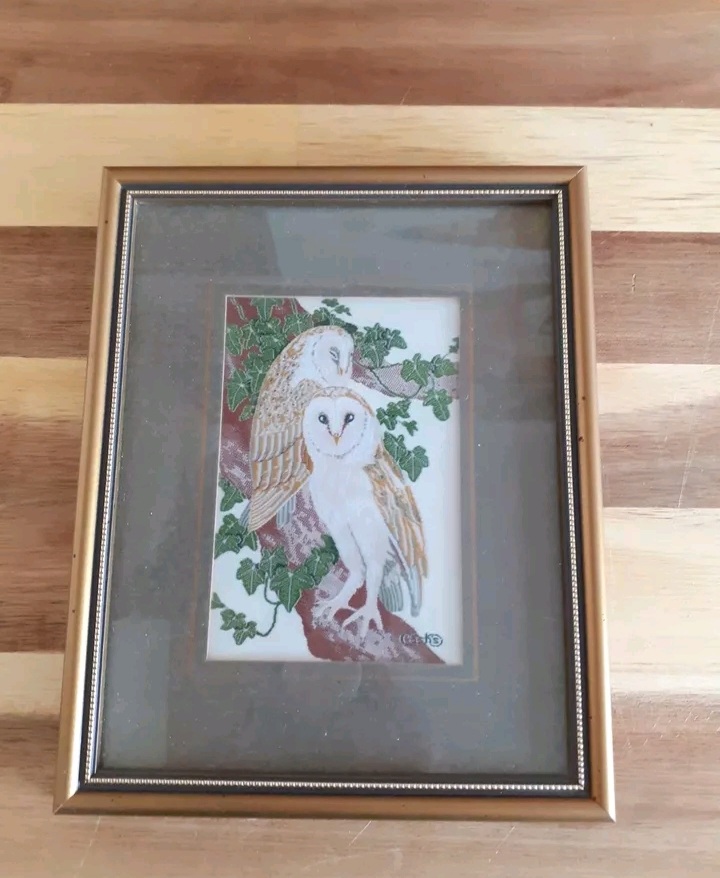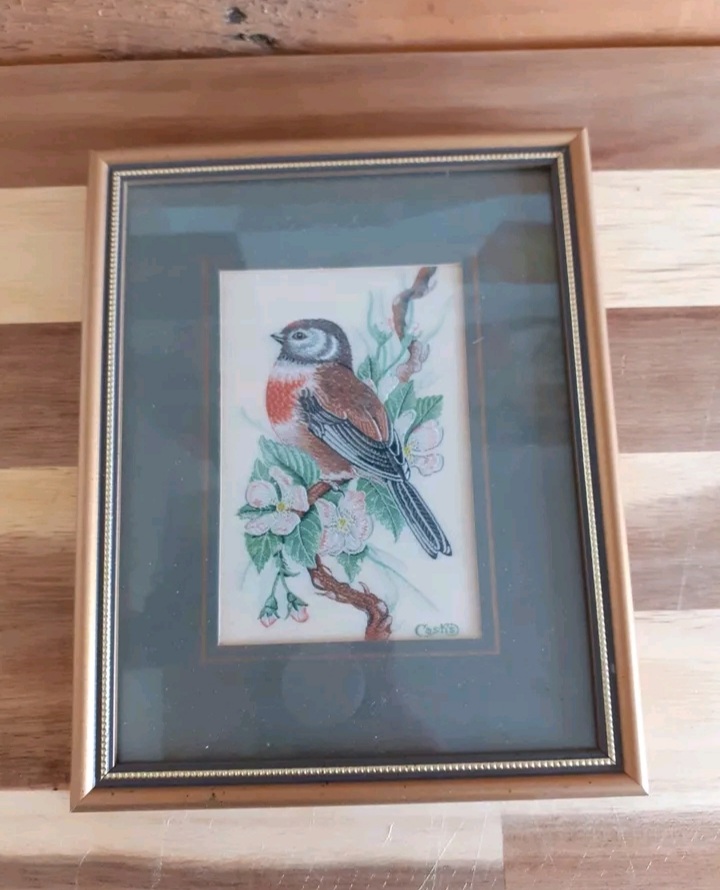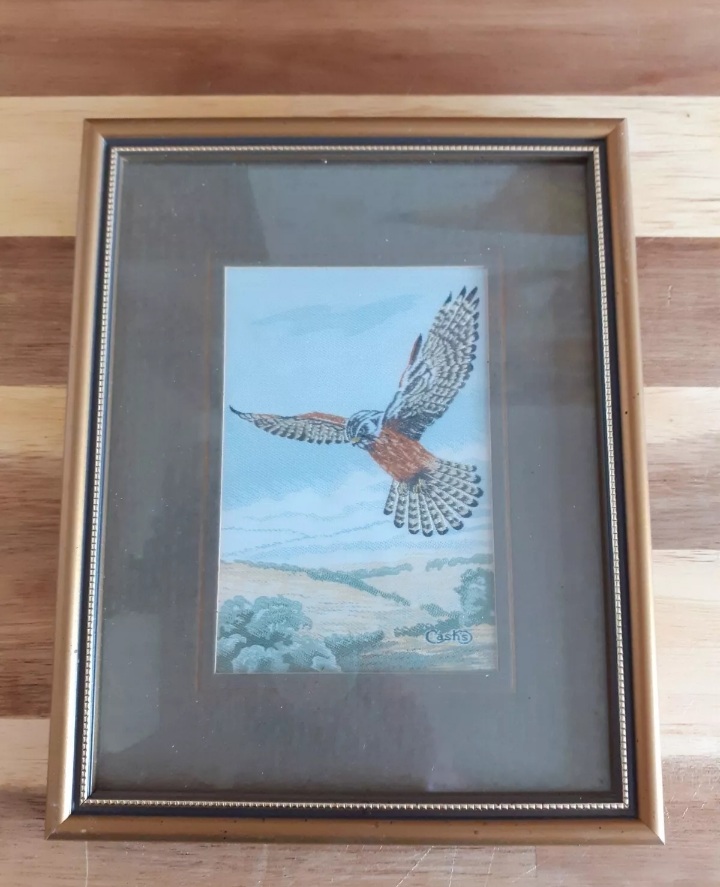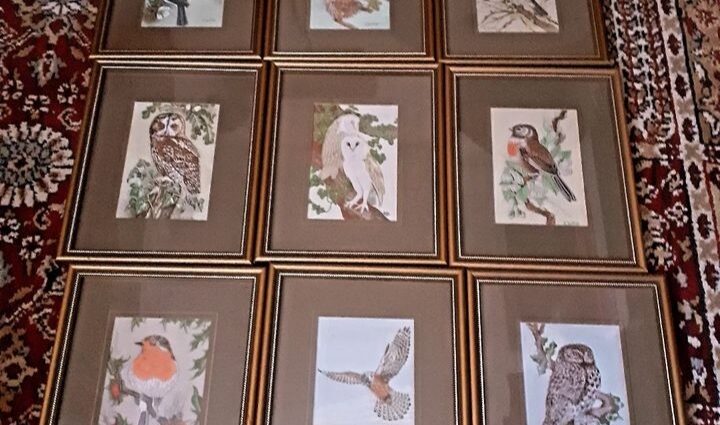History of Cash’s Silk Woven Pictures
Origins and Development
The history of Cash’s silk woven pictures dates back to the mid-19th century, with the establishment of the firm J. & J. Cash in Coventry, England, in 1846. Founded by Joseph Cash and his brother John, the company initially specialised in ribbon weaving, a prominent industry in Coventry due to the region’s expertise in textile production. The Cash brothers capitalised on this local talent pool and technological advancements, such as the Jacquard loom, which allowed for intricate designs to be woven into the fabric.
Technological Innovation
The Jacquard loom, invented by Joseph Marie Jacquard in 1804, revolutionised the textile industry by enabling the automation of complex patterns. Cash’s adoption of this technology allowed them to produce detailed and high-quality woven pictures. These woven pictures were not only admired for their craftsmanship but also for their durability and vibrant colours, which were superior to printed images.
Expansion and Popularity
By the late 19th and early 20th centuries, Cash’s woven pictures had gained significant popularity. They were often sold as bookmarks, greeting cards, and small framed artworks. The subjects of these woven pictures ranged from famous landmarks and historical events to portraits of notable figures and pastoral scenes. This wide range of subjects, combined with their affordability, made them accessible to a broad audience.
Decline and Revival
The mid-20th century saw a decline in the production of silk woven pictures due to changes in consumer tastes and the rise of cheaper, mass-produced alternatives. However, the late 20th and early 21st centuries witnessed a revival of interest in these intricate works of art, driven by collectors and historians who recognised their cultural and artistic significance.
Art Relevance of Cash’s Silk Woven Pictures
Artistic Techniques and Aesthetic Value
Cash’s silk woven pictures are a testament to the intricate craftsmanship and artistry involved in their creation. The use of the Jacquard loom allowed for the production of highly detailed images, often incorporating multiple colors and complex patterns. The precision and skill required to operate these looms meant that each woven picture was a work of art in its own right.
Subjects and Themes
The subjects of Cash’s woven pictures varied widely, reflecting the cultural and social interests of the time. Historical events, such as the coronation of Queen Victoria or significant battles, were popular themes, as were portraits of famous personalities like Charles Dickens and William Shakespeare. Additionally, scenes from nature and depictions of local landmarks catered to both local and tourist markets.
Cultural Impact
These woven pictures not only served as decorative items but also as educational tools and souvenirs. They helped disseminate images of historical and cultural significance to a wider audience, playing a role similar to that of prints and photographs. Their durability ensured that they could be passed down through generations, preserving cultural heritage in a unique format.
Influence on Textile Art
Cash’s silk woven pictures have had a lasting impact on the field of textile art. They exemplify the potential of weaving as a medium for fine art, influencing contemporary textile artists who continue to explore the possibilities of weaving complex images. The blend of technology and artistry demonstrated by these works remains relevant in today’s discussions about the intersection of craft and innovation.



Collectability of Cash’s Silk Woven Pictures
Factors Influencing Collectability
Several factors influence the collectability of Cash’s silk woven pictures, including rarity, condition, subject matter, and historical significance. Early examples and those depicting significant historical events or famous figures are particularly sought after. The condition of the woven picture is crucial; collectors prefer pieces with vibrant colors and minimal signs of wear.
Market Trends
The market for Cash’s woven pictures has seen fluctuations over the years. During the late 20th century, there was a resurgence of interest among collectors, leading to increased demand and rising prices. Auctions, antique shops, and online marketplaces have become key venues for buying and selling these items. The rarity of certain pieces, such as limited edition or commemorative works, can drive prices higher.
Preservation and Care
Proper preservation is essential for maintaining the value of Cash’s woven pictures. These items should be kept away from direct sunlight and humidity, which can cause fading and deterioration of the silk fibres. Acid-free mats and UV-protective glass are recommended for framing, and handling should be minimised to prevent damage.
Notable Collections and Exhibitions
Several museums and private collectors have notable collections of Cash’s silk woven pictures. The Herbert Art Gallery & Museum in Coventry, for instance, houses a significant collection that highlights the local importance of the Cash company. Exhibitions of these woven pictures help to educate the public about their historical and artistic value, further enhancing their collectability.
Future Prospects
The future of collecting Cash’s silk woven pictures looks promising, with growing recognition of their historical and artistic significance. As interest in vintage and antique textiles continues to rise, these woven pictures are likely to remain valuable both as collectibles and as pieces of cultural history. Ongoing research and documentation efforts will also contribute to their preservation and appreciation by future generations.
Cash’s Collection At Wildcard Curiosities
We have a collection of bird themed Cash’s Woven Silk Pictures for sale. Click on the link below, click shop on the top right of the page and search Cash’s.
